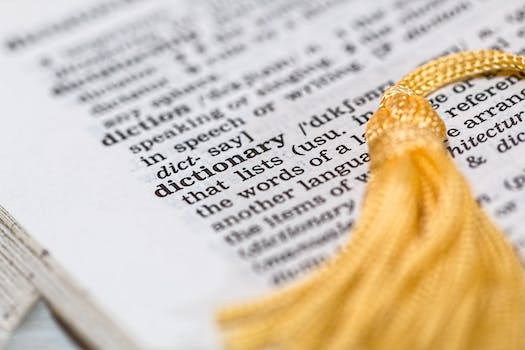

-
Table of Contents
The Unseen Influence of Boolean Algebra in Our Daily Lives: Shaping the Digital World.
Introduction
Boolean algebra is a fundamental branch of mathematics that deals with binary variables and logical operations. While it may seem abstract and disconnected from our daily lives, its influence is far-reaching and often goes unnoticed. From computer programming and digital technology to decision-making processes and problem-solving techniques, Boolean algebra plays a crucial role in shaping our modern world. This article explores the unseen influence of Boolean algebra in various aspects of our daily lives, highlighting its significance and practical applications.
The Role of Boolean Algebra in Digital Electronics
Boolean algebra, a branch of mathematics developed by George Boole in the mid-19th century, may seem like an abstract concept with little relevance to our daily lives. However, its impact is far-reaching and can be seen in various aspects of our modern world. One area where Boolean algebra plays a crucial role is in digital electronics.
Digital electronics, which form the foundation of modern computing and communication systems, rely heavily on Boolean algebra. At its core, Boolean algebra deals with binary variables, which can only have two possible values: true or false, on or off, 1 or 0. This binary nature aligns perfectly with the fundamental building blocks of digital electronics, where information is represented using bits, which are either in a high or low state.
In digital electronics, Boolean algebra is used to design and analyze logic circuits. These circuits are responsible for performing various operations, such as arithmetic calculations, data storage, and decision-making. By using Boolean algebra, engineers can manipulate and combine these binary variables to create complex logic functions that form the basis of digital systems.
One of the most basic logic gates, the AND gate, exemplifies the application of Boolean algebra in digital electronics. An AND gate takes two binary inputs and produces an output that is true only when both inputs are true. This behavior can be represented using a truth table, which shows all possible input combinations and their corresponding outputs. By applying Boolean algebra, engineers can derive the logical expression for the AND gate, which is simply the logical AND operation between the two inputs.
Similarly, other logic gates, such as OR, NOT, and XOR gates, can be analyzed and designed using Boolean algebra. These gates, when combined in various configurations, form the basis of more complex digital circuits. For example, a combination of logic gates can be used to build a multiplexer, a device that selects one of many inputs based on a control signal. By applying Boolean algebra, engineers can design and optimize these circuits to perform specific functions efficiently.
The impact of Boolean algebra in digital electronics extends beyond logic gates and circuits. It also plays a crucial role in the design of digital systems, such as microprocessors and memory units. These systems consist of millions, if not billions, of transistors, which are the building blocks of digital circuits. Transistors, in turn, can be thought of as switches that can be turned on or off based on the input signals they receive. Boolean algebra provides the framework for analyzing and designing these complex systems, ensuring their proper functioning.
Moreover, Boolean algebra is not limited to the realm of hardware. It also forms the basis of computer programming and software development. Programming languages, such as C, Java, and Python, rely on Boolean logic to control the flow of execution and make decisions. Conditional statements, such as if-else and while loops, are built upon the principles of Boolean algebra. By using logical operators, such as AND, OR, and NOT, programmers can create complex decision-making structures that drive the behavior of software applications.
In conclusion, the role of Boolean algebra in digital electronics cannot be overstated. From the design of logic gates and circuits to the development of complex digital systems and software applications, Boolean algebra provides the foundation for modern computing and communication technologies. Its unseen influence permeates our daily lives, enabling the seamless operation of the digital world we have come to rely on.
Boolean Algebra and its Impact on Computer Programming

Boolean Algebra and its Impact on Computer Programming
Boolean algebra, a branch of mathematics developed by George Boole in the mid-19th century, may seem like an abstract concept with little relevance to our daily lives. However, its influence is far-reaching, particularly in the field of computer programming. In fact, Boolean algebra forms the foundation of modern digital electronics and is essential for designing and implementing computer algorithms.
At its core, Boolean algebra deals with binary variables, which can only have two possible values: true or false, on or off, 1 or 0. This simple yet powerful concept is the basis for all digital computations. In computer programming, Boolean variables are used to represent logical states, such as whether a condition is true or false. These variables are then manipulated using logical operators, such as AND, OR, and NOT, to perform complex computations and make decisions.
One of the most common applications of Boolean algebra in computer programming is in conditional statements. These statements allow a program to execute different sets of instructions based on the evaluation of a Boolean expression. For example, a program may use an IF statement to check if a certain condition is true, and if so, execute a specific block of code. Without Boolean algebra, such conditional statements would not be possible, and programs would lack the ability to make decisions based on logical conditions.
Another important application of Boolean algebra in computer programming is in the design of data structures. Data structures are used to organize and store data in a computer's memory. Boolean variables are often used to represent the presence or absence of elements in these data structures. For example, a linked list data structure may use a Boolean variable to indicate whether a particular node is the last node in the list. This allows for efficient traversal and manipulation of the data structure.
Boolean algebra also plays a crucial role in the design of digital circuits. Digital circuits are the building blocks of modern electronic devices, such as computers, smartphones, and televisions. These circuits use Boolean variables and logical operators to perform computations and control the flow of data. For example, a digital circuit may use an AND gate to combine two Boolean variables, producing an output that is true only if both inputs are true. This allows for complex computations to be performed at the hardware level, enabling the high-speed processing capabilities of modern computers.
In addition to its direct impact on computer programming and digital electronics, Boolean algebra has also influenced other areas of technology. For example, Boolean logic is used in the design of computer networks, where logical operators are used to determine the routing of data packets. It is also used in database systems, where Boolean expressions are used to query and manipulate data.
In conclusion, Boolean algebra may not be immediately visible in our daily lives, but its influence is pervasive, particularly in the field of computer programming. From conditional statements to data structures and digital circuits, Boolean algebra forms the foundation of modern computing. Its logical operators and binary variables allow for complex computations and decision-making, enabling the development of sophisticated software and electronic devices. So the next time you use a computer or interact with a digital device, remember the unseen influence of Boolean algebra that makes it all possible.
How Boolean Algebra Shapes Decision Making in Artificial Intelligence
Boolean algebra, a branch of mathematics developed by George Boole in the mid-19th century, may seem like an abstract concept with little relevance to our daily lives. However, its influence can be found in various aspects of our modern world, particularly in the field of artificial intelligence (AI). Boolean algebra plays a crucial role in shaping decision-making processes in AI systems, enabling them to analyze complex data and make informed choices.
At its core, Boolean algebra deals with binary variables, which can only have two possible values: true or false, represented by 1 and 0, respectively. This simple yet powerful framework forms the foundation of logic gates, which are the building blocks of digital circuits. These logic gates perform logical operations such as AND, OR, and NOT, based on Boolean algebra principles. By combining these gates, complex circuits can be created to perform intricate tasks.
In the realm of AI, Boolean algebra is instrumental in designing algorithms that enable machines to make decisions based on input data. AI systems rely on logical operations to process information and arrive at conclusions. For instance, when a self-driving car encounters a stop sign, it needs to determine whether it should stop or continue moving. By using Boolean algebra, the AI system can evaluate various factors such as the presence of other vehicles, the speed of the car, and the traffic conditions to make an informed decision.
One of the key applications of Boolean algebra in AI is in the field of natural language processing (NLP). NLP involves teaching machines to understand and interpret human language. Boolean algebra helps in creating algorithms that can analyze the structure and meaning of sentences. By breaking down sentences into logical components and applying Boolean operations, AI systems can extract relevant information and generate appropriate responses. This capability is crucial in chatbots, virtual assistants, and other AI-powered communication tools.
Furthermore, Boolean algebra is also employed in machine learning algorithms, which are the backbone of many AI systems. Machine learning algorithms learn from data and make predictions or decisions based on patterns and relationships within that data. Boolean algebra allows these algorithms to process and manipulate data in a logical manner, enabling them to identify patterns and make accurate predictions. This is particularly evident in applications such as image recognition, where AI systems use Boolean operations to analyze pixel values and classify images.
In addition to decision-making, Boolean algebra also plays a role in data filtering and retrieval. In AI systems that process large volumes of data, Boolean operations are used to filter out irrelevant information and retrieve specific data points. This capability is crucial in search engines, recommendation systems, and data analysis tools, where efficient data retrieval is essential for providing accurate and relevant results.
In conclusion, the influence of Boolean algebra in our daily lives, particularly in the realm of AI, is often unseen but significant. By providing a logical framework for decision-making, Boolean algebra enables AI systems to analyze complex data, make informed choices, and respond intelligently to human interactions. From self-driving cars to virtual assistants, the impact of Boolean algebra in shaping the future of AI cannot be overstated. As technology continues to advance, the principles of Boolean algebra will continue to underpin the development of intelligent systems that enhance our lives in countless ways.
Q&A
1. How is Boolean algebra used in computer programming?
Boolean algebra is used in computer programming to represent and manipulate logical values, such as true and false. It helps in creating logical expressions, making decisions, and controlling program flow.
2. How does Boolean algebra impact digital circuit design?
Boolean algebra is fundamental to digital circuit design. It allows engineers to design and analyze complex digital circuits using logic gates, which implement Boolean functions. These circuits form the building blocks of modern electronic devices and systems.
3. In what ways does Boolean algebra influence internet search engines?
Boolean algebra plays a crucial role in internet search engines. It enables users to perform advanced searches by combining keywords using logical operators such as AND, OR, and NOT. These operators help refine search queries and retrieve more accurate and relevant search results.
Conclusion
In conclusion, Boolean algebra plays an unseen yet significant role in our daily lives. It forms the foundation of digital logic and computer science, enabling the design and operation of modern technology. From simple tasks like using search engines and social media platforms to complex operations in telecommunications and data processing, Boolean algebra is at the core of these systems. Its principles are also applied in various fields such as mathematics, engineering, and artificial intelligence. Despite its often unnoticed presence, Boolean algebra's influence is pervasive and essential in shaping the digital world we live in today.











